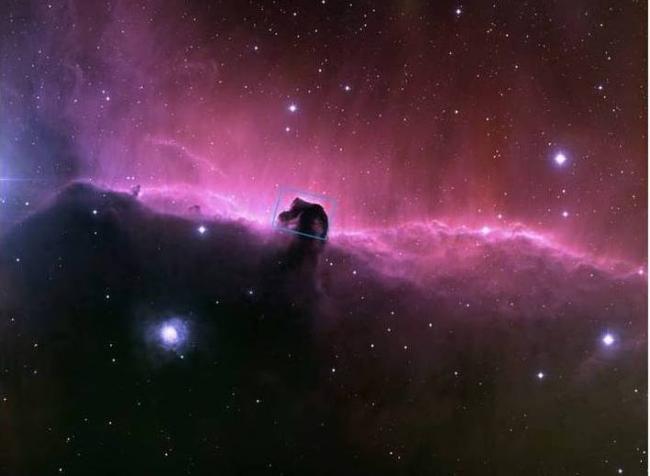
The Horsehead Nebula, seen here in the optical, is shaped by the absorption of dust grains distributed in clouds in the interstellar medium. Astronomers have completed a statistical analysis of dust absorption and emission properties from extensive recent observations across the sky and reached new conclusions that will aid in modeling the dust's contribution to many other cosmic phenomena including contamination of the cosmic microwave background emission.
Dust is found scattered throughout space. It is composed of fine particles made of silicates, like sand on Earth, or of carbon, and these are often blended with other elements. Dust strongly absorbs light at ultraviolet and visible wavelengths, and in our galaxy large clouds of dust are sometimes seen as dark shapes in front of bright nebula as the dust dims our view of the light behind it (the famous Horsehead Nebula is an example of such optical extinction effects). Dust particles are produced and ejected during the final stages of a star life, or in stellar winds, and are the most important component of the interstellar medium after gas, playing a crucial role in the formation of new stars, in facilitating interstellar chemistry, and in producing circumstellar disks of material from which planets form.
Over the decades many useful approximations have been made to the dust properties. Most of them try to model dust extinction with just one or in some cases two dust parameters. CfA astronomers Ioana Zelko and Doug Finkbeiner, building on this long enterprise, have just completed a significant new study of interstellar dust grains, their variations in size and composition, and their effects on interstellar extinction. The astronomers combined published studies of the dust extinction towards tens of thousands of stars and the dust infrared emission seen by the Planck all-sky survey with a large statistical analysis of dust grain models. Their goal was to determine the distribution of dust grain sizes and then to model the shape of the extinction curve versus wavelength, the amount of dust compared to the amount of gas, and the relative abundances of key elements (like silicon and carbon).
Several major new conclusions emerged from this study. The common assumption has been that dust's infrared emission and uv/optical absorption are perfectly correlated, but the scientists find that this relation is not fixed, but instead depends on the shape of the reddening curve which in turn depends in part on the composition. They also find, in agreement with expectations, that a larger grain size usually leads to a larger value of extinction, as does a higher proportion of carbonaceous to silicate material; they also describe the temperature dependence of the slope of the infrared emission. The new statistical analysis offers possible solutions to a number of outstanding puzzles, but several issues remain (for example, the assumed spherical shape of all grains), and in ongoing work the scientists will include a wider range of dust models for comparison.
Reference(s):
"Implications of Grain Size Distribution and Composition for the Correlation Between Dust Extinction and Emissivity," Ioana Zelko and Doug Finkbeiner, The Astrophysical Journal 2020 (in press).